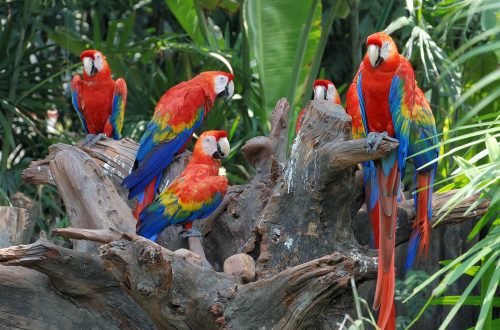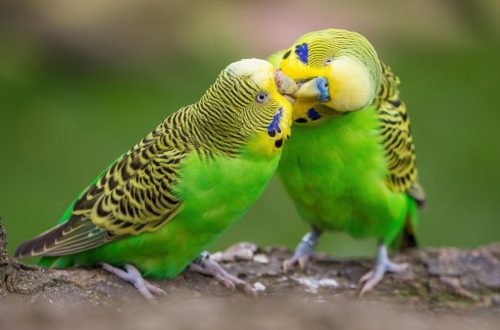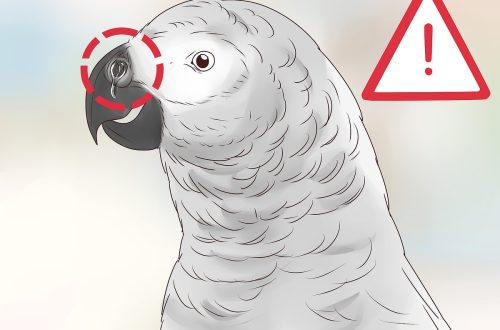
Parrot diseases: symptoms and treatment
Parrots rarely get sick, but trouble can happen to them. There are symptoms that can accurately reflect a particular disease. In this case, the sooner you notice something is wrong, the greater the likelihood that you will have time to help your feathered pet in time. In order to notice the symptoms in time, the owner must know his bird well, namely, what is characteristic of it and what is not. Only human attention and care guarantee the bird a healthy and joyful life.
Contents
The most common diseases of parrots
Signs of a healthy bird:
• Active and cheerful
• Sings and chirps
• Smooth and shiny feathers
• A good appetite
• Not a long sleep
• Sitting on one leg during sleep
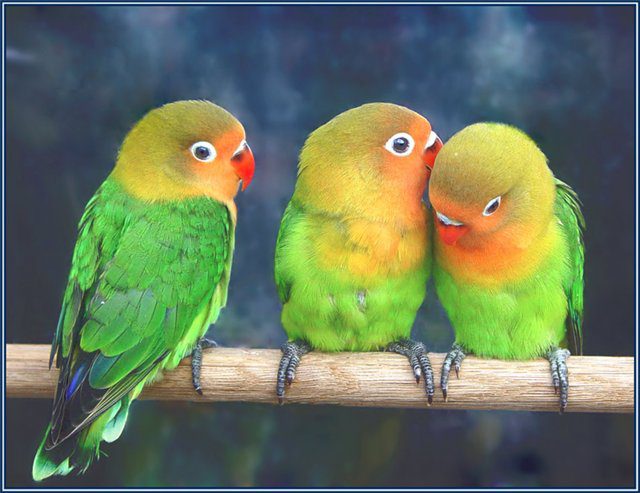
Symptoms of a sick bird:
• Poor appetite
• Labored breathing
• Cloudy eyes
• Apathy, immobility
• Rapid and irregular breathing
• Protracted sleep
• Sleeps on two legs
The reasons for the negative state of the bird can be very different. If you are a beginner among bird lovers, then it is better not to rely on your own opinion, but to seek help from a veterinarian, taking some droppings with you for bacterial research. The specialist will be able to correctly diagnose and prescribe the necessary treatment.
Diseases of birds can be divided into three groups:
Non-contagious
*Most often occur as a result of malnutrition of a parrot or poor-quality care for it. The most common disease in this section is beriberi. The reasons for them are the monotonous feeding of the parrot – one type of food (for example, only dry mixes or only cereals, etc.). The manifestation of the disease will be different – depending on which vitamin is lacking (they are divided in this way: avitaminosis A, avitaminosis B, etc.).
* Traumatic injuries. Fractures and sprains of varying severity most often occur when safety standards are not observed during bird flights around the apartment. Be sure at this time it is necessary to close the windows with curtains (tulle), cover mirrors, keep an eye on open doors and lockers. These injuries are then very difficult to treat, since the main medicine becomes some kind of ointment, which lubricates the damaged surface. Parrots begin to pluck out smeared feathers, inflicting new wounds on themselves. In addition, with their strong beak they tear off the bandages applied to tire fractures, thus causing complications. In general, indiscretion on your part will bring you a lot of trouble.
infectious
They arise as a result of the fact that specific infectious agents enter the feathered body. Most often, birds become infected with stale food (a musty grain mixture with mold) or by accidentally eating the droppings of a diseased bird (if not everything is organized correctly in the cage, otherwise it would be impossible).
Invasive
Diseases caused by the ingestion of animal parasites into the body of a bird.
There are a lot of diseases that are dangerous for the person himself, for example, salmonellosis. If you notice deviations in the behavior of your feathered one, if there are at least a couple of signs that we indicated above – do not wait, contact a specialist so that everything does not end sadly.

In Russia, the most popular among bird lovers are budgerigars. Consider the most common diseases of parrots using the example of symptoms in budgerigars. In general, wavy living in cages and aviaries have a fairly strong resistance, but they can also catch an infection. The disease manifests itself in them most often within one day. Birds become lethargic, lose their appetite, sleep a lot, stop chirping and singing songs, “talking” individuals stop “talking”. The pen becomes dull, ruffled, brittle; breathing becomes difficult. You should also pay attention to the beak: a healthy horny cover should be smooth without cracks and delaminations. The same recommendations for inspection apply to the horny surface of the paws.
Consider the most common diseases, their symptoms and treatments.
Psittacosis
One of the most common diseases among budgerigars. Caused by chlamydobacteria. Symptoms:
• Edema of the connective membrane of the eyes
• Runny nose
• Copious discharge from the anus
• Loss of appetite
• Prostration
Antibiotic treatment.
salmonellosis
Caused by salmonella – intestinal rod-shaped bacteria. Most often, infection occurs through contaminated feed and water or through the droppings of already sick birds. The disease proceeds rapidly: severe dehydration occurs due to intense diarrhea. Even if the bird survived the acute stage, the disease becomes chronic and the bird becomes a carrier, and therefore potentially dangerous to others. The disease in most cases is incurable (there is only a small chance at the initial stage). IMPORTANT!!! The disease is dangerous to humans, so all precautions must be taken when dealing with a sick bird.
Roundworm
Budgerigars, like many of their brethren, are subject to attacks of various kinds of intestinal parasites. The most dangerous among – roundworms – roundworms that settle in the small intestine. Infection occurs through feed contaminated with the droppings of diseased birds. Symptoms of the disease in budgerigars:
• Alternating diarrhea and constipation
• Poor appetite
• Long sleep
• Painful reaction to touch
• Rapid weight loss
When treating a disease, in addition to taking medication, a prerequisite is the disinfection of the cage or aviary, as well as everything that is inside: perches, toys, feeders, etc.
Knemiocoptosis
In other words, scabies. The disease affects the head, legs, beak and eyebrows. Symptoms:
• The beak becomes as if dotted with small depressions
• Inflammation of the skin around the beak and eyes
• Growth of the horny cover of the fingers on the paws
• Scales on the fingers grow to gigantic sizes
• Lethargy and apathy
• Labored breathing
Treatment occurs within one week. It is necessary to treat the non-feathered parts of the body with an oil solution and the feathered parts of the body with the Arpalit aerosol preparation. At the end of the treatment, it is necessary to remove the dead layer of the stratum corneum, carefully process all the tools, and disinfect the cage / aviary.
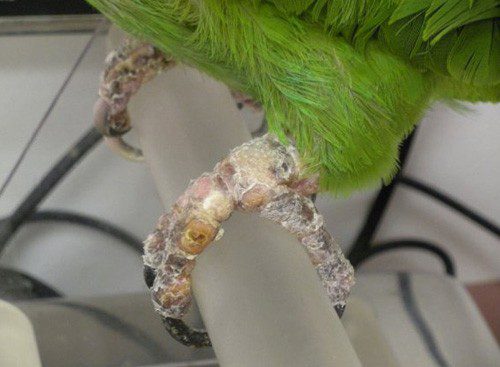
Gout
This is a disease of the joints caused by the accumulation of uric acid salts. In addition to the joints, the kidneys and other internal organs suffer. In the absence of the necessary treatment, the bird may die within 3-4 days (it is customary to count from the day the first nodule appears). The reason most often becomes malnutrition, namely the abundance of human home food unusual for a parrot. Symptoms:
• The appearance of white nodules on the paws with reddened veins around the joints and tendons (they cause severe pain to the pet)
• General weakness, apathy, fatigue
• Alternating loss of appetite and its sudden onset
• Thirst
• Pride
Treatment begins primarily with the removal of painful nodules on the legs. The formation is pierced with a disinfected needle and the liquid accumulated there is removed (squeezed out). Vitamins and proteins of animal origin are completely excluded from the diet. In addition, the feather is prescribed drugs that help dissolve uric acid salts.
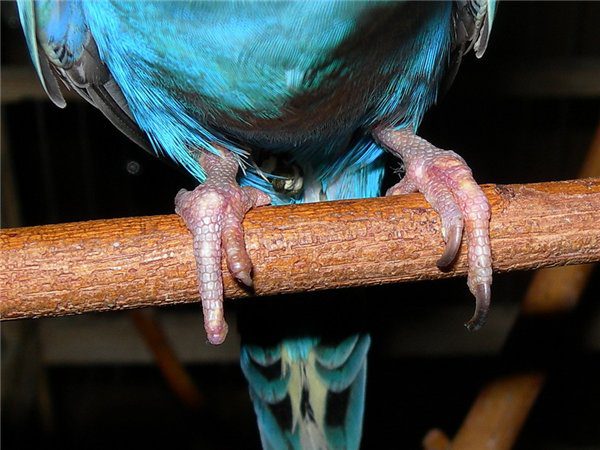
parrot diarrhea
Diarrhea most often causes the death of budgerigars, since the owner cannot always correctly determine the cause of diarrhea. Only when the bird does not lose its appetite and activity during diarrhea, it can be assumed that some kind of food became the cause of the malaise. Only in this case, you can self-medicate. If the bird has lethargy, drowsiness, incessant diarrhea, an urgent need to contact a specialist. Treatment for diarrhea caused by malnutrition:
• Powdered activated carbon
• Branches of fruit trees
• Ftalazol (in small doses)
• Exclusion from the diet of cabbage, lettuce, plantain and other green fodder.
If you properly care for your pet, monitor nutrition and not engage in unjustified self-treatment, then your pet will live a long, happy and eventful life with you.



